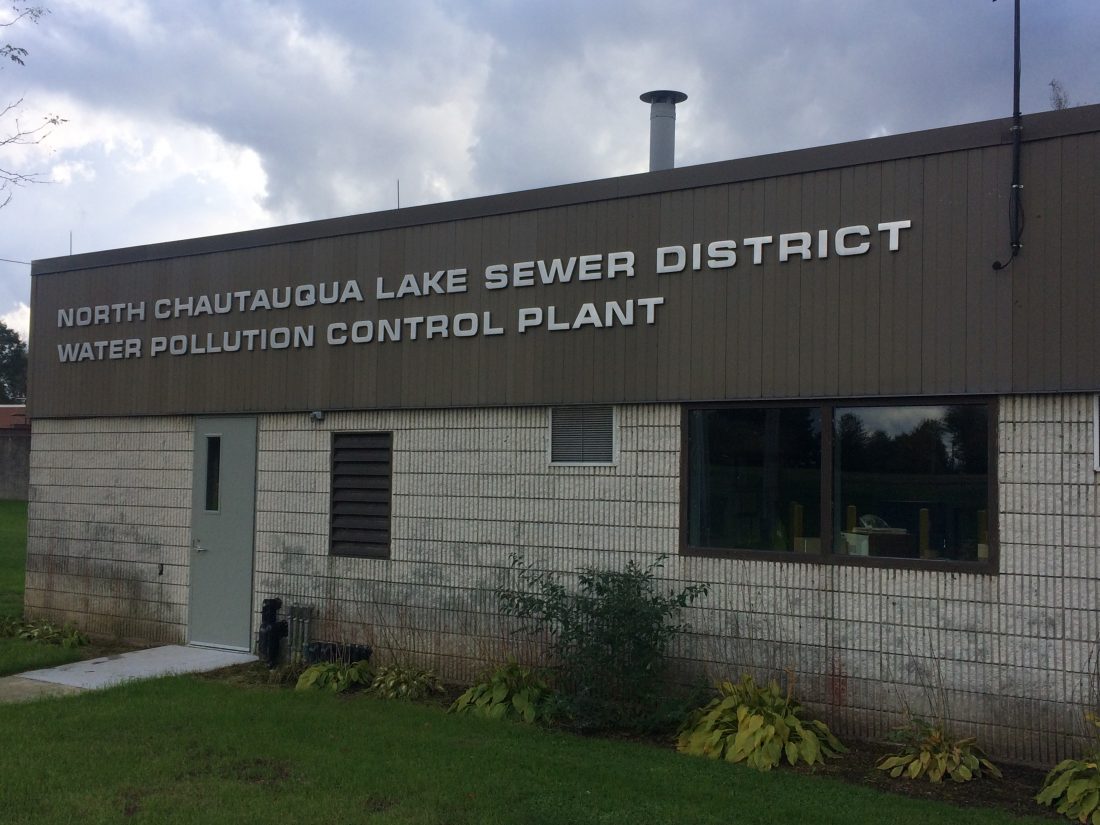Plant Upgrades Substantially Reduce Lake Phosphorous

Recent upgrades to the wastewater treatment plants at the North Chautauqua Lake Sewer District and Chautauqua Utility District have significantly reduced their phosphorus loading to Chautauqua Lake. Photo by Claire Quadri
Wouldn’t it be nice if we could just flip a switch on some new high-tech invention and … voila! … no more algae or weeds in Chautauqua Lake. Unfortunately, no such quick and easy “fix” yet exists.
As we all know by now, excessive nutrient and sediment loading to the lake are primary causes of the lake’s algae blooms and nuisance plants. It’s no easy task to reduce the amount of nutrients and sediment that enter the lake, so we all have to do our part to make sure that the waters discharging to the lake are as clean as possible.
Despite the difficulty and challenges of this task, progress was made last year. After years of planning and hard work, improvements to two local wastewater treatment plants were completed, significantly reducing a major source of Chautauqua Lake’s phosphorus.
But these improvements didn’t just happen overnight.
In 2012, a plan to reduce phosphorus in Chautauqua Lake was published. The report, entitled “Total Maximum Daily Load (TMDL) for Phosphorus in Chautauqua Lake,” evaluated the various sources of phosphorous in Chautauqua Lake and indicated that wastewater treatment plants, both private and public, accounted for about 5,500 pounds of phosphorus entering the north basin of lake per year, which is equivalent to about 20 percent of the phosphorus loading to the north basin. The 2012 TMDL report estimated that the North Chautauqua Lake Sewer District wastewater treatment plant discharged over 2,300 pounds of phosphorus per year to the lake and that the Chautauqua Utility District discharged over 2,800 pounds to the lake per year. The report also recommended that the amount of phosphorus discharge from these two facilities be significantly reduced, with a goal of 85 percent reduction for the North Chautauqua Lake Sewer District and a 83 percent reduction for the Chautauqua Utility District.
The long and difficult process of planning, approving, funding, permitting, designing, engineering and constructing the needed improvements was then initiated. The improved Chautauqua Utility District wastewater treatment plant was fully operating in the spring of 2018, and the improved North Chautauqua Lake Sewer District wastewater treatment plant was on line as of October 2018. Both Mike Starks, Superintendent of Operations of the Chautauqua Utility District, and Scott Cummings, Director of the North Chautauqua Lake Sewer District, report that the discharge from their respective facilities meets the new standards for phosphorus reduction.
The successful performance of the upgraded facilities is an important step toward reducing the amount of phosphorus in Chautauqua Lake, and the water quality improvements resulting from this reduction will be seen in the lake over future years.
If you would like to see for yourself how the wastewater treatment process works, and how the investments in these facilities are providing cleaner water to Chautauqua Lake, please join us on Saturday, April 6 at 10 a.m. as Scott Cummings, Director of the North Chautauqua Lake Sewer District, leads a tour of the upgraded facility in Mayville. For more information, call 664-2166 or visit www.chautauquwatershed.org or www.facebook.com/chautauquawatershed. Funding has been provided by the Chautauqua County 2 percent Occupancy Tax.
The Chautauqua Watershed Conservancy is a local not-for-profit organization dedicated to preserving and enhancing the water quality, scenic beauty and ecological health of the lakes, streams, wetlands and watersheds of the Chautauqua region.






